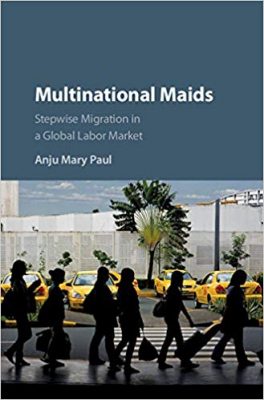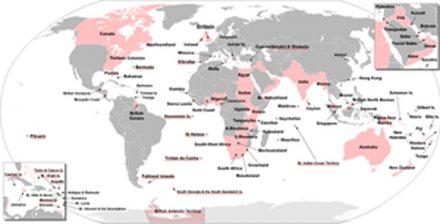 Author: Anju Mary Paul
Author: Anju Mary Paul
Publisher: Cambridge University Press – 386 pages
Book Review by: Sonu Chandiram
As of 2013, there were about 8.4 million Filipinos (including about 3.5 million in the United States and over a million in Saudi Arabia) in 11 countries that had at least 200,000 migrants from the Philippines. On July 22, 2018, the Philippines’ population was 106 million, the thirteenth largest in the world, with a young median age – just over 24, compared to nearly 38 for the U.S.
Take a look at Table 3.1 – Countries with Largest Stock of Overseas Filipinos in chapter 3 – Origin Stories – that shows you the number of Filipinos in each of those nations. A September 8, 2017 Pew Research Center article shows that U.S.-based Filipinos, who have one of the largest percentages of English-speaking members among them, had increased to 3.9 million by 2015.
Today in July 2018, Filipinos likely number over four million and they constitute one of the largest numbers of Asian migrants to the United States. This is probably due to American influence that began with the colonization of the Philippines after the end of the Spanish- American War that ended with the Treaty of Paris signed on December 10, 1898.
This book of course, is not just about migrants from the Philippines, but also about other (mainly) Asians to other countries, and most of them constitute domestic workers, that do housework. The second largest group of such people were Indonesians in 2013, who numbered nearly 3.5 million in the top 10 countries with people from this country. Saudi Arabia and Malaysia were the leaders, with about 1.3 million and over a million, respectively.
This work by Anju Paul however, is not just limited to statistics on migrants and labor markets, but leads us deep into personal motivations that drive individuals out of their home countries, leave their loved ones for years or even for good, and face hardships and trepidations about the new lands that they bravely venture into, not knowing what awaits them. So this book is about stories, as well, but tied together with certain themes that you will discover as you delve into it.
To help you in your journey of discovery, we provide you a broad perspective by listing its three Parts and nine chapters below:
- Introduction
- Part I. The Context
- Key Concepts in Stepwise International Labor Migration
- Origin Stories
- Global but Uneven: The Market for Migrant Domestic Workers
- Part II. The Actors
- Stepwise Journeys, Compared and Contrasted
- The World According to Migrant Domestic Workers
- Inside the Stepwise Migrant Worker’s Suitcase
- The Agents of Stepwise Migration
- Part II. The Aftermath
- The End of the Road
- Conclusion
This book is uniquely different from others on the subject of international labor migration in that unlike others that focus on domestic workers going to a single country, this one takes a broader perspective – household helpers from a number of Asian countries going to other countries, including in Asia where average educational levels and incomes are higher, such as Hong Kong and Singapore. Saudi Arabia is also a favorite country, with its oil wealth and relatively stronger currency.
We do not want to provide readers with a discussion of any specific topic in this book, but invite you to take a look at this growing phenomenon of domestic workers fulfilling labor needs in their destination countries, and at the same providing a livelihood for themselves and their families, including future livelihood enabled with large savings.
This is a unique, valuable contribution by Anju Paul to a niche area that is relatively little known in the field of immigration and labor economics. She not only writes from personal experience and a unique insight, but impressively backs up her perspective with solid data from reliable sources such as the United Nations.
Author:
Anju Mary Paul is Associate Professor of Sociology and Public Policy at Yale-NUS College in Singapore. She is an international migration scholar with a research focus on migration to, from and within Asia, and is especially interested in how gender, labor, race, and ethnicity, as well as class intersect at the moment of migration and the post-migration experience.
Her research spans the migrations of low-wage Asian migrant domestic workers and high-skilled Asian-born, Western-trained bioscientists. She has published sole-authored articles in the American Journal of Sociology, Social Forces, Migration Studies, and the Journal of Ethnic and Migration Studies. She has also edited a volume of essays on spaces of globalization in Singapore, Local Entrepreneurs in a Global City: Singapore Stories (2017).





